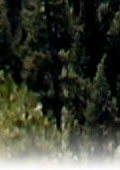Featured Employee
Bernadette Cooney
What do you get when you mix together the following ingredients?
- A Bachelor's degree in Environmental Sciences;
- A Graduate degree in Forestry from North Carolina State;
- Three years' Peace Corps Service teaching forestry practices in Honduras;
- Extensive experience managing nurseries; and
- An outdoor enthusiast, who enjoys cycling, skiing or kayaking.
You get a good introduction to Bernadette Cooney, the District's Revegetation Coordinator. Bernadette, who goes by Berna, joined the District this summer bringing her work experience, love of the outdoors and wonderful sense of humor to the Revegetation program. Berna's background is a great fit for the District as we begin to include projects like the Trinity Alps Industrial Park Wetland.
Her skills complement the expertise of the other staff in the Revegetation program, and all of us know you'll give her a warm welcome when you meet her on the job or around town.
|
District Manager's Corner
by Pat Frost
My dad learned about land stewardship from his dad growing up on the family farm. My introduction to conservation came from walking the same fencerows, wood lots and stream banks 20 years later. I listened to their stories of what had changed and what had stayed the same on that land over the years – and what they did to manage the natural resources that had been handed down to them.
That type of connection to the landscape has changed for many of us. Most of us, including our children live in towns today. Forests and streams, fields and lakes are places visited now and then on a family outing or a school field trip. There aren’t as many opportunities to watch the landscape around us over time – to take note of how our land stewardship practices improve and maintain the health of the natural world around us. Anyone who has been a part of our annual trip with the Weaverville Elementary School Sixth Grade Classes to Bar 717 Camp knows that I am a strong advocate for observing nature, writing about it in a journal and sharing those observations from one year to the next. The Upper Class at Coffee Creek School makes these year-to-year observations when they look at the before and after photographs of a fuels reduction project near their school.
The Conservation Almanac chronicles many of our projects. For example, this issue has articles that cover our education projects with school children, and the wetland restoration project at the Trinity Alps Industrial Park in Weaverville. I want to link these two very different types of activities: on-the-ground stewardship projects, like wetland restoration, with our education projects. We will call this link our Conservation Legacy program. Here’s how it will work:
The District designs and implements restoration projects on public lands. Sometimes we’re lucky and the projects are close to a town and a school. Local students will spend time during the school year out in the field on selected projects with District staff and other professionals involved in the projects.
At first glance these may appear to be recreational field trips, but in reality Conservation Legacy will be an education program that applies classroom knowledge with real-world experience. Students will use some of our projects as living laboratories. “Using their scientific research, geography, social studies, language arts, problem-solving and design skills on real tracts of public land gives students the opportunity to apply academic concepts in meaningful ways. Everything is ‘hands-on’,” explains Dan Hayes, education specialist and a friend of mine, who developed a similar program in St. Augustine, Florida.
Many students have not been exposed to the natural world around us as part of an educational program, so this will be a new and exciting experience for them. It is my hope that this program will give the students practical skills that they would not get in a classroom setting – “hands-on” experiences in a variety of careers including engineering, surveying, forestry, chemistry, biology and public relations. Students will have the opportunity work with the District on: resource inventories, water quality monitoring, growing native plants, planting restoration sites, habitat maps, wildlife surveys, photo-monitoring, interpretive trails, and educational kiosks.
Conservation Legacy will be an opportunity for teachers and their students to adopt local conservation projects as living laboratories and help with the design, implementation and maintenance of them over time. Hopefully students will learn to think about and manage the land as a legacy to be passed from class to class and generation to generation. The District also will learn more about what is working and what we need to change, so that we all can be better stewards of our shared legacy – the wonderful natural world that has drawn us to Trinity County.
|


